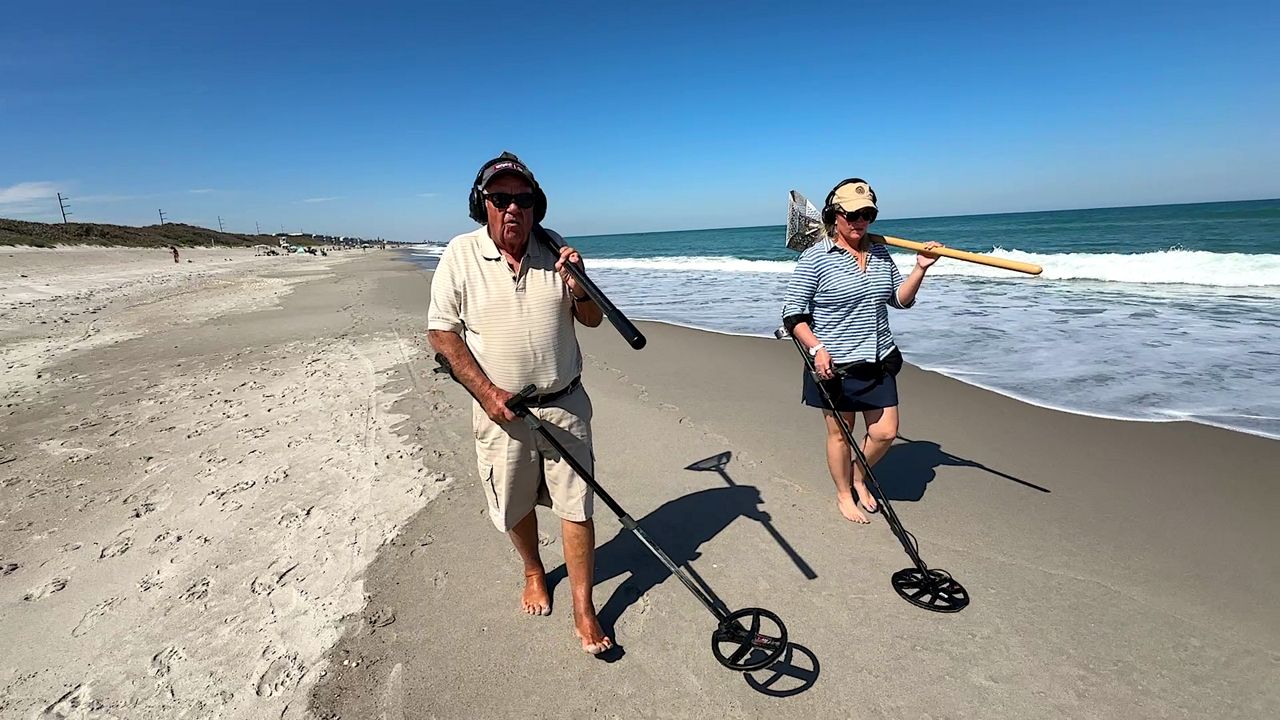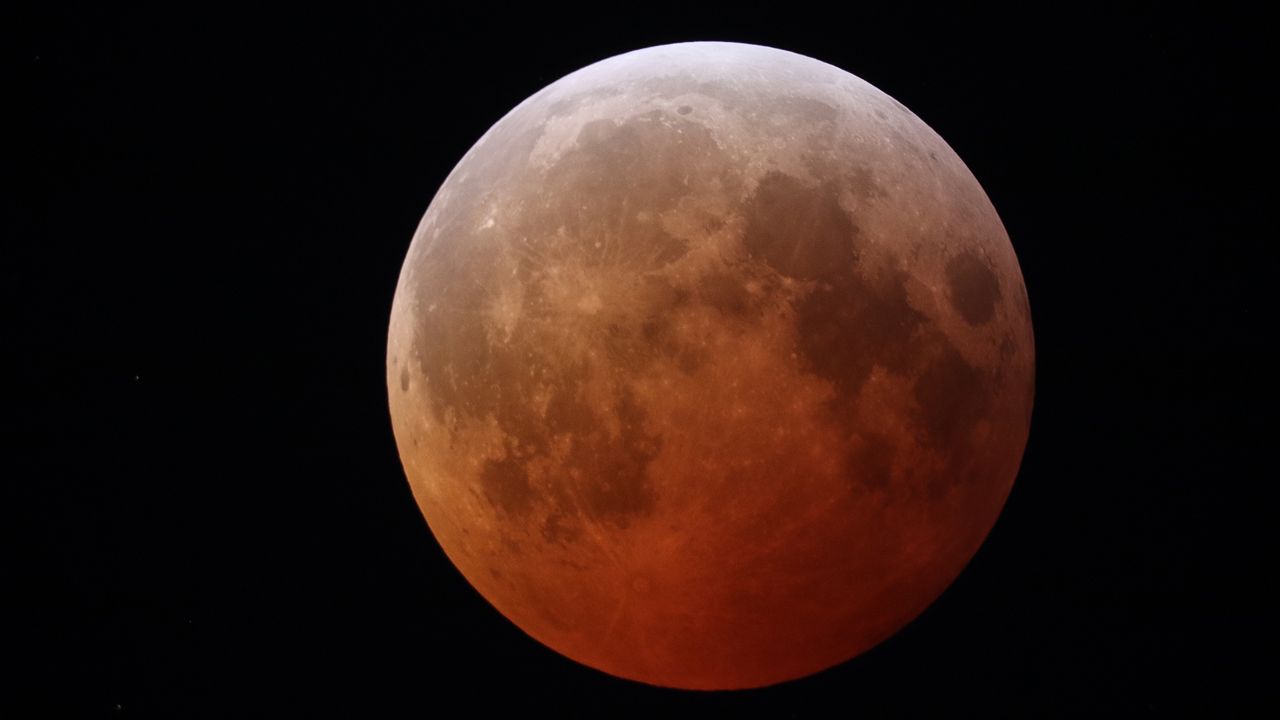BREVARD COUNTY, Fla. — Astronauts will soon get a novel and tasty treat this spring as tomatoes will be grown for the first time in space.
The Expedition 68 crew aboard the International Space Station (ISS) will receive seeds for “Red Robin” dwarf tomato plants as part of the SpaceX Commercial Resupply Services (CRS) 26 mission set to launch from the Kennedy Space Center in Florida on Nov. 26 at 2:20 p.m. EST.
What You Need To Know
- Veg-05 will mark the first time tomatoes are grown on the Space Station for consumption
- The experiment will last more than 100 days and will be paralleled on Earth at Kennedy Space Center
- Researchers are also studying the psychological impact for astronauts of growing food and consuming fresh ingredients in space
This new vegetable for the astronauts on board is part of NASA’s “Pick-and-Eat Salad-Crop Productivity, Nutritional Value, and Acceptability to Supplement the ISS Food System” (Veg-05) investigation.
The dwarf tomatoes are the second of a two-part experiment. Veg-04 in 2019 focused on a leafy green crop called “Mizuna Mustard.”
This experiment is near and dear to the heart of Dr. Gioia Massa, the primary investigator for both Veg-04 and Veg-05. She said it’s very exciting to see this crop get ready to fly for growth and harvesting in space.
“Personally, I love tomatoes, I’ve always loved tomatoes. My name is Italian, my family roots are Italian. We eat a lot of tomatoes in my family,” Massa said. “They’re a bit challenging, as many of us know, to grow outside in Florida. We have a lot of diseases that affect tomatoes here.”
“But you know, there’s nothing like a ripe tomato. They just taste wonderful. And so, I’m excited to see the astronauts get to taste these.”
Today, NASA and SpaceX will send about 7,700 lbs of cargo, supplies and science to the @Space_Station, including these dwarf tomato seeds!
— Will Robinson-Smith (@w_robinsonsmith) November 26, 2022
They will be grown and harvested for the #Veg05 experiment under red and blue LED lights.
📸: me for @MyNews13#SpX26 #spacetomatoes pic.twitter.com/keoB04u7Dp
Tomatoes in space
As astronauts spend increasingly more time in space, NASA and others are looking to diversify their diet and figuring out how to grow crops in an unnatural environment.
The tomato seeds heading up to the orbiting outpost will be grown inside a chamber called the Vegetable Production System (Veggie). It was developed through a partnership between Sierra Space, a subsidiary of the Sierra Nevada Corporation, and NASA’s Kennedy Space Center (KSC).
Veggie was sent up to the Space Station in 2013 and is managed by NASA’s Dinah Ignacio Dimapilis.
Spectrum News visited the Space Station Processing Facility prior to the launch of the Veg-05 seeds to the ISS. Massa showed us both the seeds that are part of the upcoming experiment as well as those that will be used in a parallel ground experiment.
Veg-05 is being conducted through a collaboration between KSC, Johnson Space Center (JSC), Purdue University and Sierra Space. Researchers will study the impacts of different red and blue light ratios on things like “crop morphology, edible biomass yield, organoleptic acceptability nutritional value and microbial food safety.”
Massa said another important aspect during the roughly 100-day growth period is to observe the psychological impacts on the astronauts, both of just having these plants in space as well as their cultivation.
“They have some psychological benefits that we’re only just starting to quantify,” Massa said. “A big part of this Veg-05 experiment is doing surveys of the astronauts to find out how they feel about growing plants and how they like the tomatoes.”
The space-bound seeds were packaged in space grow bags known as “plant pillows.” In order to successfully grow these dwarf tomatoes from seeds into full-blown plants with veggies, Massa said they had to use a special controlled release fertilizer from Sarasota-based Florikan to support a longer growth period, compared to previous leafy greens grown on orbit.
Massa said polymer coating on the fertilizer helps “limit the release of fertilizers to the rate that the plants need over time.” She noted that the technology came about through a NASA collaboration, setting up for a “wonderful spinoff” and “full-circle story.”
“This company won the ability to have some NASA partnership, NASA helped with the development of their innovation as they were developing these coatings,” Massa explained. “And now we’re using this innovative fertilizer blend because it works really well in our plant pillows for space, only releasing the nutrients that the plants need.”
Planting the seeds of space crop researcher
Massa herself is something of a NASA spinoff story. She grew up in Central Florida and while she was a student at DeLand Middle School in Volusia County, she had a teacher who planted the seeds of inspiration after he had the opportunity to do some work at KSC and bring back video tapes to show his class.
“This was back in the 1980s. He brought back a ton of information to his classes and he had hours and hours of video,” Massa said. “And I sat there and just watched all of that video. I was totally enthralled by it and decided that’s what I wanted to do. And he was very supportive of this.”
While she was still a student at DeLand Middle School, Massa said they built hydroponic systems and tomatoes were among the first crops that she grew.
“So, this is really pretty exciting to be growing tomatoes finally in space,” she said.
Massa went on to join the Future Farmers of America (FFA) and receive degrees in plant biology from both Cornell University and Penn State University. Throughout, she kept finding her way to various opportunities at KSC before becoming a project scientist there in 2013.
She was also one of 18 federal researchers that received the Presidential Early Career Award for Scientists and Engineers in 2019.
“I just had all of these little boosts along the way. I even got to do a Space Shuttle experiment as a graduate student with a number of other students at Penn State at the time,” Massa said. “And when an opportunity to be a post-doctoral researcher opened up here at Kennedy, I applied to work on the Veggie system, which is what I’m still doing work on.”
Combatting ‘menu fatigue’
In addition to expanding how crops are grown in space and improving techniques, as Massa noted, there’s a psychological component to the Veg-04 and Veg-05 experiments that NASA and its partner agencies hope to learn from as well.
For those with the dedication to meal prep for the week, variety is key and you don’t want to repeat foods all the time or risk become bored of your pre-prepped foods.
That very human trait is not only a concern for those of us who are Earth-bound, but it’s a real concern for astronauts too.
“We were worried that the crew will suffer from menu fatigue when they’re on long mission. And when people have menu fatigue, they don’t eat as much and then they don’t get the nutrients that they need,” Massa said.
Rest assured, astronauts have plenty of food available as part of their packaged diet. Massa said there are about 180 different food items on the International Space Station, along with about 20 or so beverages and condiments.
However, Massa pointed out that it’s important to start integrating more fresh ingredients into astronaut diets for increasingly longer missions, since diets stored for a long time, like for a Mars mission, would start to degrade and the vitamins would break down.
“These are very fit, healthy people that don’t need to lose weight and so, we don’t want them losing weight, but people often do lose weight, even on the space station,” she added. “So, we hope to have a good mix of crops so that everybody can find something that they like and change up their diet as much as they want to supplement the packaged food.”
Space gardening for the benefit of astronauts and Earthlings
Massa and other researchers at Kennedy Space Center and beyond are in the process of determining what the future of growing food and other crops will look like for the coming years and decades of space travel.
Inside the lab at the Space Station Processing Facility there’s a whiteboard with a roadmap of how NASA will continue its journey of off-world food production that will get increasingly more dynamic.
With the banner heading of “Space Crop Production – Feeding Exploration” as the overarching goal, the board marks goals of each level of space exploration, from low Earth orbit work on the ISS to the upcoming Gateway around the Moon all the way out to the surface of Mars.
“We’ve got a lot to do. There’s a lot of challenges out there,” Massa said. “I think it’s really helpful to lay them out in this sort of way because we also have to figure out how can we get these things done. What is industry doing on the ground that can benefit NASA?”
She said some of those hurdles range from things like how to apply water and nutrients to crops without gravity as well as which crops grow best in an off-world environment. Massa said the goal of working and living longer in space is to become more “Earth independent.”
“In the near-term, as we stay longer, we want to actually supplement more of the diet, so more of the staple crops and NASA has worked on those for a very long time,” Massa said. “Crops like potatoes that my colleague Ray Wheeler spent a lot of his career studying. Wheat, rice, those are great crops to produce a lot of calories to become Earth independent, but we also need processing equipment for some of those. We don’t even have cooking equipment on the Space Station.”
Part of the benefit of pushing what is possible in space is that it also can translate to new farming techniques here on Earth, especially in places where sprawling farm space is in short supply.
“It’s a real opportunity. These dwarf tomatoes grow well in containers. This is something that you could have on a windowsill somewhere. You don’t need a giant greenhouse,” Massa said. “So, working on dwarf crop varieties that are really ideal for people’s windowsills or kitchens is another commonality that NASA has with those of us on Earth because there’s not always a lot of space to grow all the wonderful things that you want to eat.”
And while Massa notes the great many culinary and agricultural challenges to supporting humans further in space, she said it’s a rewarding endeavor.
“It’s complex, but that’s what makes it so much fun because it’s always something different. You’re not just in this one very narrow channel, you’re interacting with all these different people,” Massa said.
“I work with psychologists and microbiologists and fluid physicists and robotics experts and it’s just a wonderful way to use your brain and think differently and creatively.”









